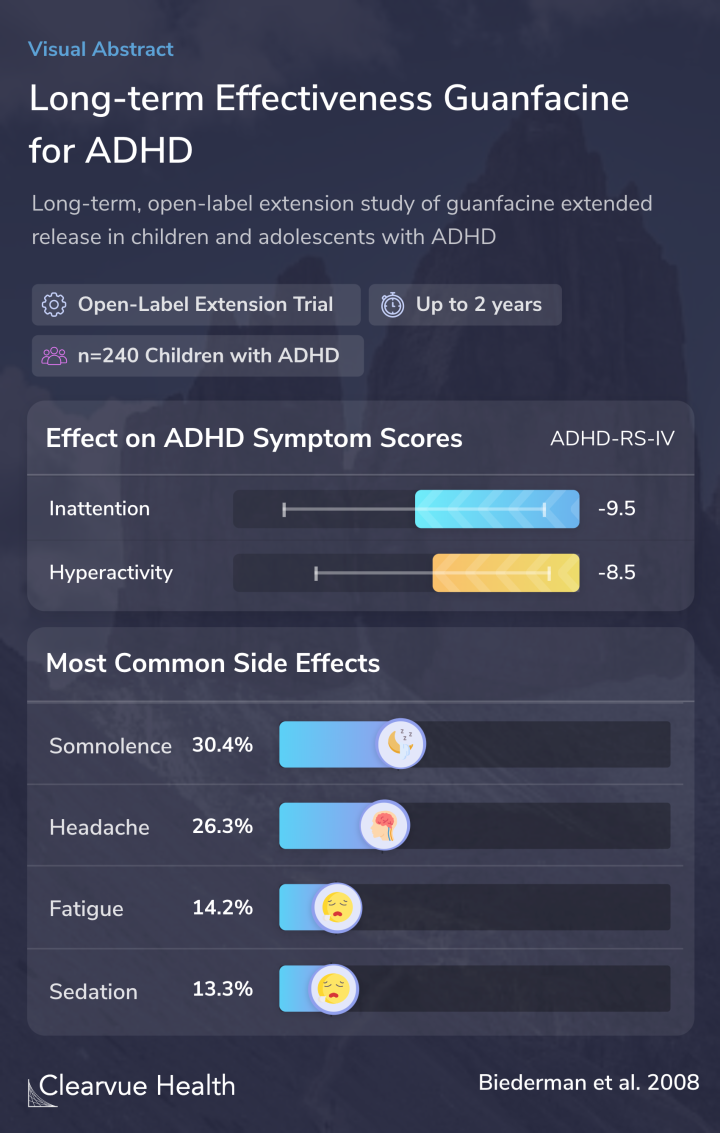Long-term, open-label extension study of guanfacine extended release in children and adolescents with ADHD
Long-term Effectiveness of Guanfacine for ADHD
J Biederman , Raun D Melmed, Anil Patel, Keith McBurnett, Jessica Donahue, Andrew Lyne

Objectives
ADHD is commonly treated with medication and therapy. Studies have shown that stimulant medication can be highly effective in treating ADHD, but they don’t work well for everyone.
This study wanted to examine if guanfacine could treat ADHD safely long-term in children. Guanfacine acts on certain brain parts that are known to affect ADHD symptoms. The short-term effectiveness of guanfacine was established in previously published data from this study.
This paper wanted to see how safely and effectively guanfacine could work over several months and years.
Guanfacine is a noradrenergic agonist that is believed to improve symptoms of attention-deficit/hyperactivity disorder (ADHD) through selective actions at alpha2A-adrenoceptors in the prefrontal cortex. A recent double-blind, multicenter trial supports the efficacy and safety of guanfaci...
Methods
Researchers followed up on a previous clinical trial that established the short-term effectiveness and safety of guanfacine. 240 children from the previous trial were monitored for two years to see whether guanfacine remained effective and what long side effects it may cause.
Subjects were 240 children 6-17 years of age with a diagnosis of ADHD who participated in the preceding randomized trial. GXR was initiated at 2 mg/day and titrated as needed in 1-mg increments to a maximum of 4 mg/day to achieve optimal clinical response.
Results
The results showed that the effectiveness of guanfacine was consistent throughout the two years. ADHD symptoms remained reduced, showing that guanfacine can be an effective long-term treatment for ADHD.
There were some side effects, mostly sleepiness, headache, fatigue, and sedation.
The most common adverse events were somnolence (30.4%), headache (26.3%), fatigue (14.2%), and sedation (13.3%). Somnolence, sedation, and fatigue were usually transient. Cardiovascular-related adverse events were uncommon, although small reductions in mean blood pressure and pulse rate ...
Conclusions
This study demonstrated that guanfacine can effectively treat ADHD over many years. It is generally safe, though it does lead to some side effects. Fortunately, the side effects are mostly mild.
Guanfacine also has a very different side effect profile than stimulants, as most of the side effects are sedating. This can be an advantage for children struggling with stimulant side effects.
Long-term treatment with GXR was generally safe for up to 24 months of treatment, and effectiveness was maintained over this treatment period.